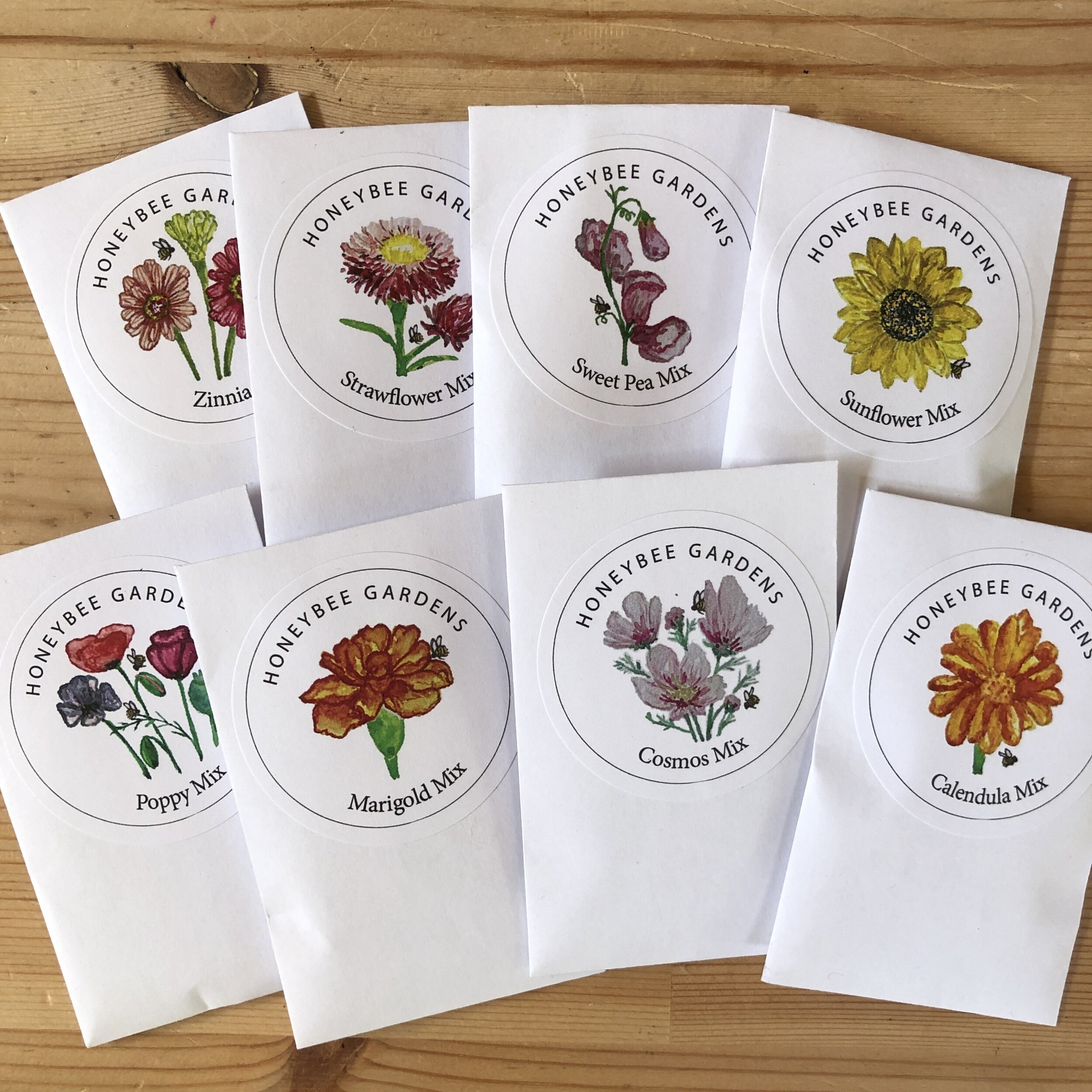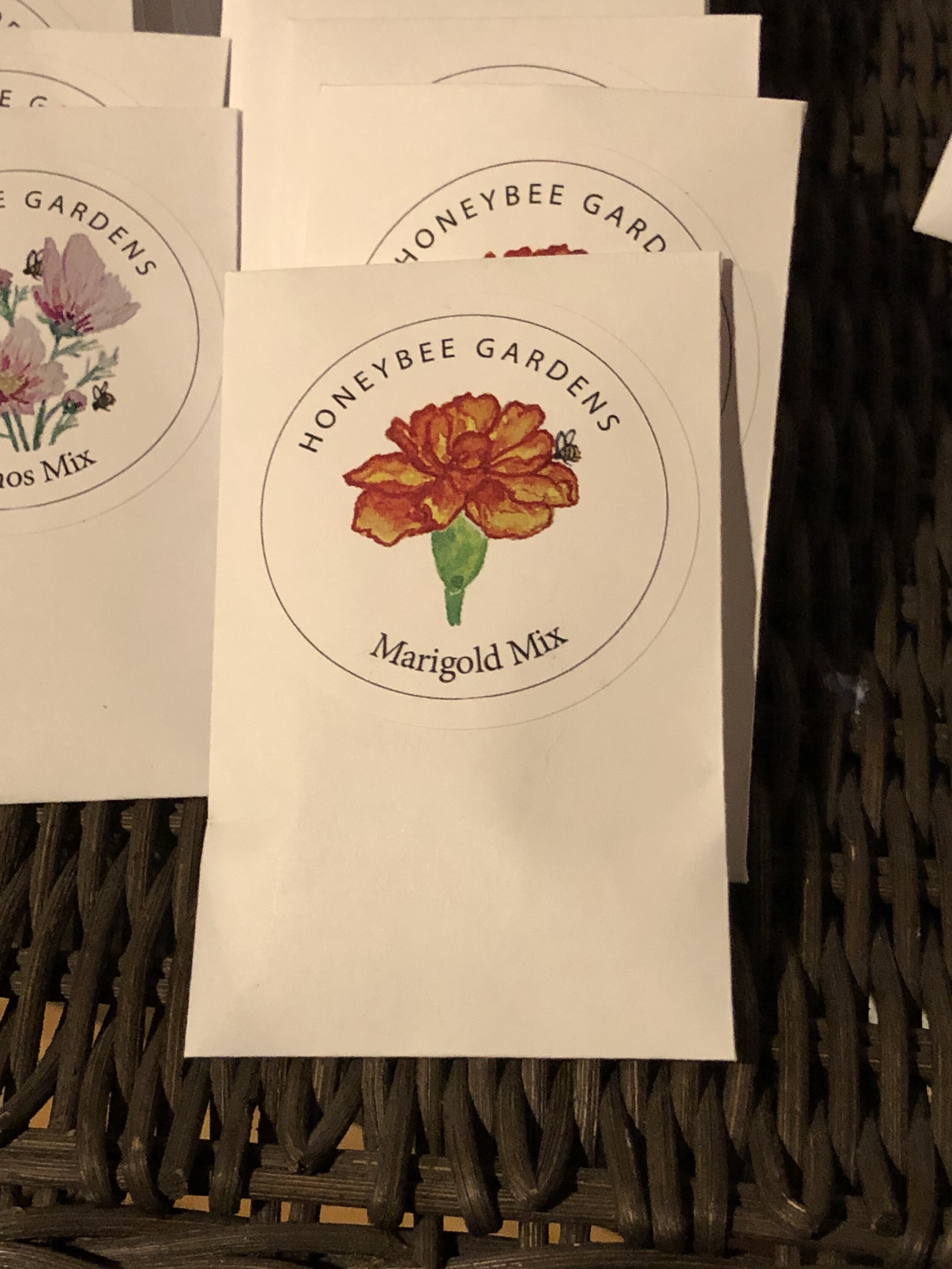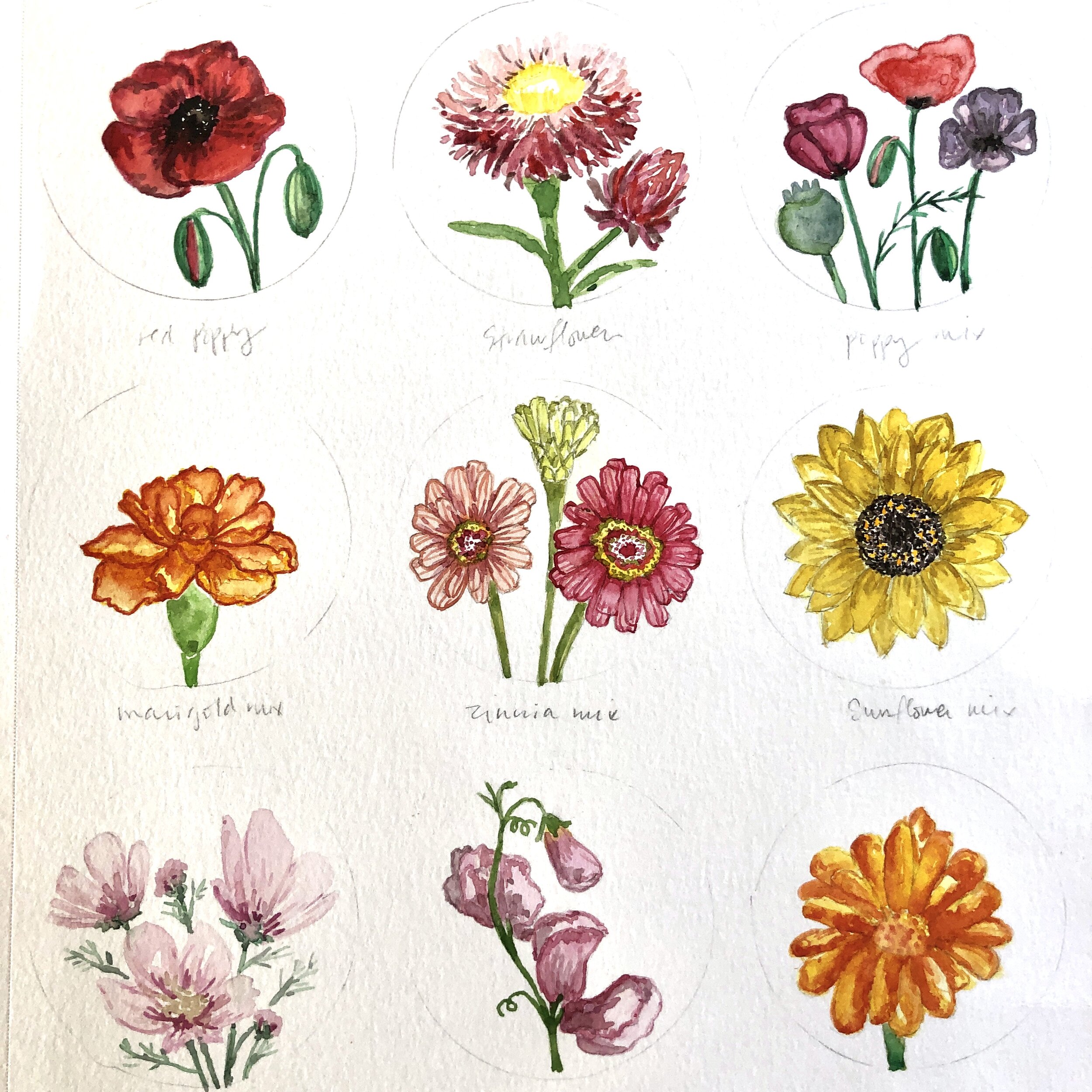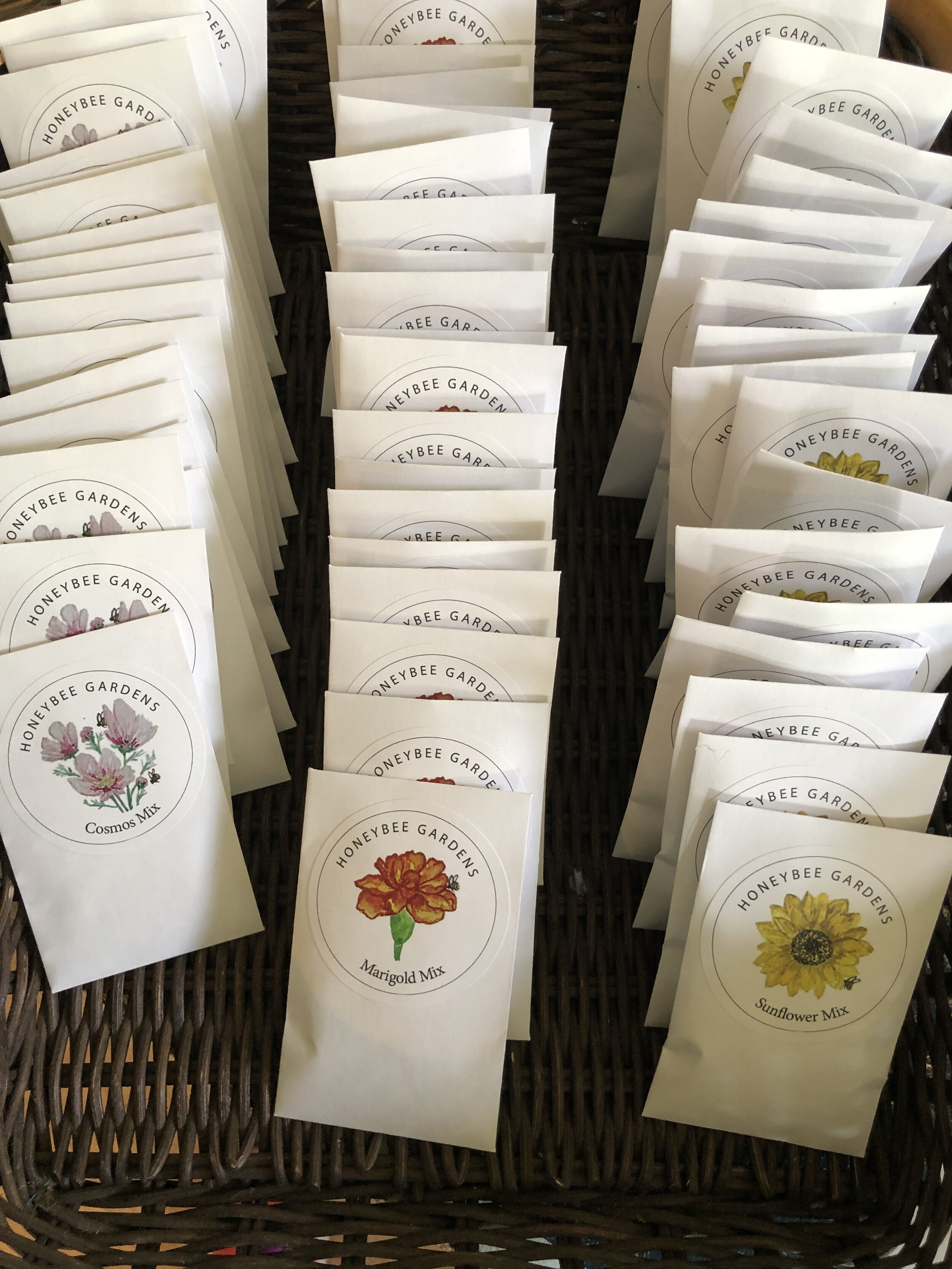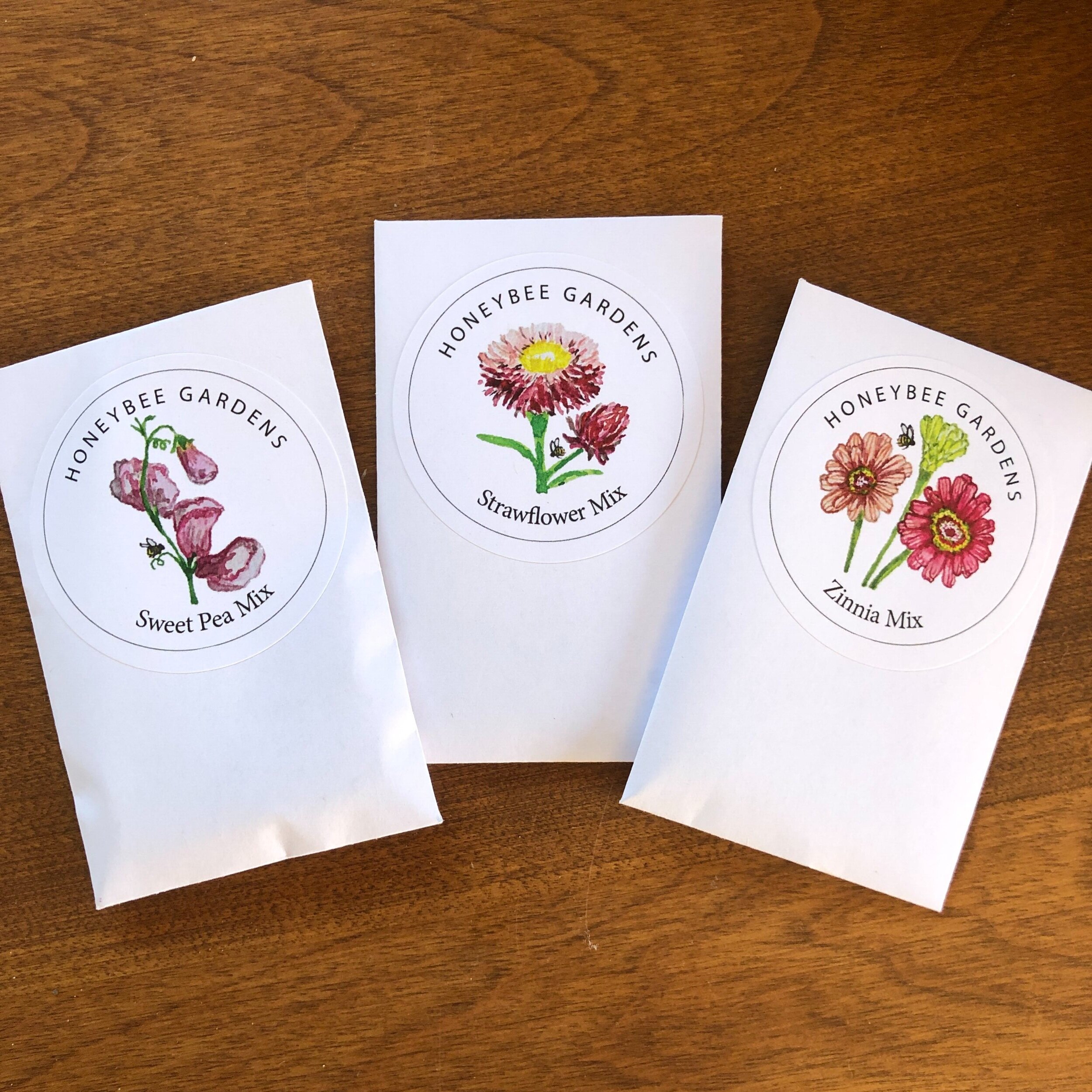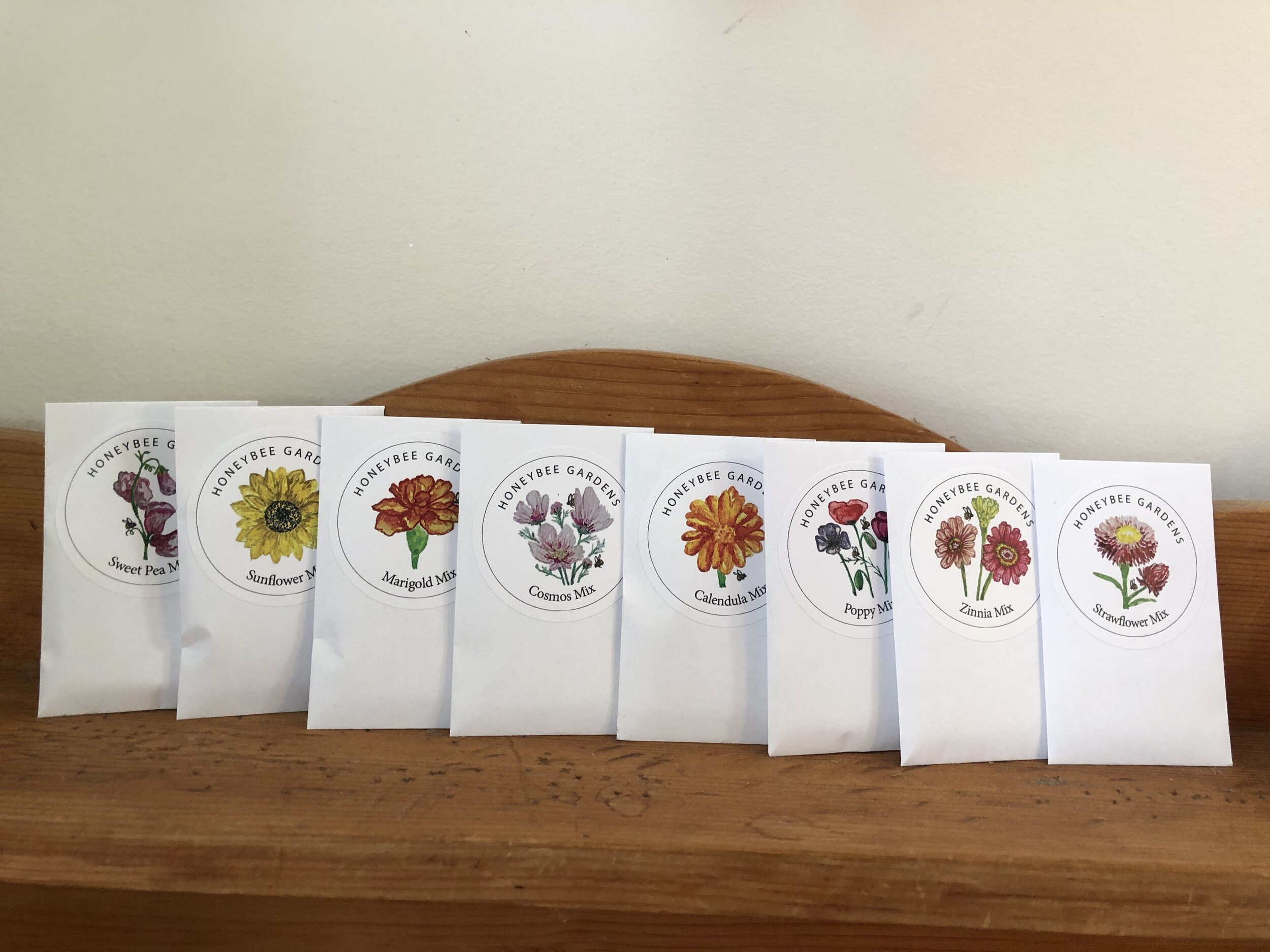All our seeds are available in our Etsy Shop!
Seed Planting Instructions:
All Honeybee Gardens seeds are great for adding to your pollinator garden and will attract bees and flying insects, especially honeybees! Try growing them yourself and harvest the seeds to replant next year. Click here to find the last frost date for your area, as it will help to know when to plant these seeds safely.
Strawflower
Directly sow strawflower seeds in full sun after the danger of frost has passed. Sow evenly and thinly and barely cover with fine soil. Seeds need light to germinate. Water gently and regularly.
Seedlings will emerge in 7-10 days. When 2 inches tall, thin plants to 6-12 inches apart by removing extra plants.
Harvest when flowers are blooming but before they start to curl open. They will feel papery and dry even when fresh and will last forever as a dried flower. Cut the stems off and make a garland by threading a needle through the stem stub or directly through the center of the flower.
To save seeds for next year, let the flower stay on the plant until the plant is done growing. You will see feathery dandelion type seeds in the center of the flower, with a small oval shaped seed attached to each piece of dander. Rub the dander off and you will have a small pinch of seeds from each flower you save. Keep in a cool, dark place until spring when it is time to plant again.
Poppies
Directly sow seeds in full sun after all danger of frost has passed. Sow seeds thinly and lightly cover with ¼ inch of soil. Water gently and keep evenly moist.
Seedlings will emerge in 10-14 days. When 1 inch tall, thin plants so they are 8-10 inches apart. Keep soil evenly moist but not wet.
Poppies make wonderful cut flowers. Cut the flower when it is mostly closed still, and seal the cut end of the stem with a lighted match to prevent instant drooping.
Poppies will self-sow reliably; leave some spent flowers to develop seeds and either collect the seed pods to plant next year or let the wind and rain help scatter the seeds in the fall.
Save seed heads for fall arrangements or decor or to collect seeds to plant next year.
Sunflower Mix
Directly sow seeds in full sun after all danger of frost has passed. Sunflowers will turn to face the sun, so make sure they are in an open area of the garden. The taller varieties can also shade smaller plants, so plant accordingly.
Sow seeds ½ inch deep spaced about 8-12 inches apart, water and keep evenly moist. Seedlings will emerge in 7-10 days.
Not all sunflowers produce edible seeds! Edible sunflowers will mature about 3 months after sowing depending on how dry the summer has been. To harvest the seeds, cut the heads off after the stalks are dry but before fall rains arrive. Check the flower heads for maturity: if the florets in the center of the flower have shriveled, the back of the flower head is turning yellow, or the head is starting to droop, then it is ready to cut. Keep about 6 inches of the stem attached when you harvest, and hang up the flower heads in a dry place to let the seeds fully mature and dry.
Marigold Mix
Directly sow seeds in full sun after all danger of frost has passed. Sow seeds about 6 inches apart and cover with ¼ inch of fine soil. Water gently and keep evenly moist.
Seedlings will emerge in 7-14 days. Thin the plants to be about 9-12 inches apart when they are about 1 in tall.
Marigolds will bloom for months if you cut dead flowers off regularly.
These plants are known to help repel garden pests, so consider planting them in many different areas of your garden.
Marigolds are edible- the petals can make a nice salad garnish.
As Fall approaches, stop deadheading the flowers and let some dry to make seeds. Trim the seed heads and let fully dry before saving in bags to plant in the spring.
Many cultures use marigolds for celebrations. Use a needle and thread to make a garland that will hold its beauty and color until next summer when it is time to harvest more of these bright and vibrant flowers. We hang our marigold garlands in our kitchen windows.
Calendula Mix
Directly sow seeds in full sun after danger of heavy frost has passed. Sow seeds thinly and cover with ¼ inch of soil. Water gently and keep moist. Seedlings will emerge in 10-15 days. Thin to 12-18 inches apart when plants are about 2 inches tall.
Deadhead the plants regularly and they will bloom all summer long!
Plants can self-sow, so allow some to set seeds and harvest when the seed head is completely dry.
The petals can be used fresh on salads or used in cooking, they add a taste similar to saffron. These flowers are also great for making salves and infused oils.
Cosmos
Directly sow seeds in full sun after danger of heavy frost has passed. Sow seeds 4 inches apart and gently cover with ¼ light soil. Water gently and keep moist. Seedlings will emerge in about 7-10 days. Thin seedlings to 8-10 inches apart when plants are about 1 inch tall.
Cosmos will bloom continuously if you pinch off dead flowers regularly. Stop deadheading in late summer if you want to save seeds or encourage the plant to self-sow and drop seeds to grow next spring.
To cut for arrangements, pick right after the flower opens. Cosmos foliage can also be used as frilly greens in an arrangement.
Sweet Pea Mix
Sweet pea seeds have very hard seed coats. For more successful germination, soak the seeds in water overnight before sowing. Then plant in full sun in early spring, about 3 inches apart and 2 inches deep. Water gently and keep moist.
Sweet peas are climbers, and need some sort of support. They can climb a fence, chicken wire, a trellis or even vertical strings.
To encourage continuous blooming, pick regularly and deadhead any blooms that are spent.
Sweet peas will make a pod that looks similar to a pea pod but both the plants and the seeds are TOXIC so be sure that young children don’t ingest them by mistake.
Zinnia Mix
Directly sow seeds in full sun after all danger of frost has passed. Sow seeds evenly about 8 inches apart and cover with ¼ inch of fine soil. Water gently. Seedlings will emerge in 7-10 days. Thin seedlings to be about 12 inches apart, when they are about 1-2 inches tall.
Remove spent flower heads to keep plants flowering until fall. Zinnias make terrific cut flowers, and cutting the flowers encourages new blooms.
Zinnias attract hummingbirds, butterflies and beneficial insects.

